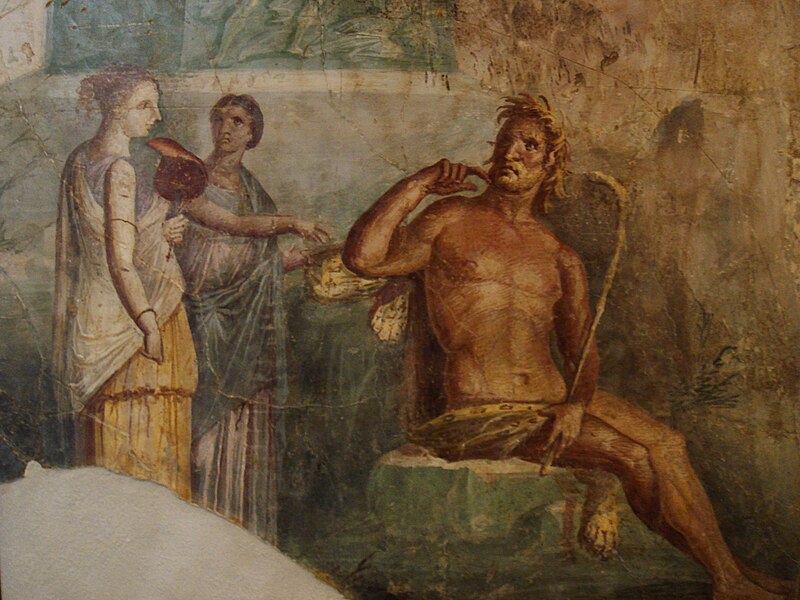 |
| This is Minoan, not Mycenaean but Wow. |
This post is mostly the result of having WAY too many tabs open, but the reason I have way too many tabs open is because I was researching rings-- in particular, signet rings, which can be ASTOUNDINGLY detailed-- of the Mycenaean period and the late bronze age for Pirithous. (Pirithous, being Pirithous, gets all the best gold jewelry.) Anyway, there are a LOT of really cool things, because jewelry, lucky for us, is one of those things that sticks around. Unlike wood, it doesn't biodegrade. Bronze will oxidize, of course, and silver tarnishes, but gold doesn't, and that's how we end up with super like-new looking rings
like these in auctions.
 |
| This ring IS Mycenaean. |
But in the interest of being able to close some tabs on my browser, I think it's time I shared a few of these awesome discoveries with you, friends and followers, and so I have them all somewhere that I can refer back to later (because holy crap my bookmarks are such a giant mess of disorganized ridiculousness).
 |
| Another image of the cup, probably imported from Crete. |
For starters, I am not entirely sure what Hartzler.org (the slideshow looks like it was made for a college class) is, but this
gold cup is incredible. There's a second one among those slides in the sidebar, along with
an armlet, several
signet rings, lots of pottery, and a number of other fascinating and beautiful artifacts. But before I found this cup, I'd been under a wildly different impression of what a bronze age cup might look like, and the fact that this resembles something one might find at a chuckwagon (at least in basic form, if not material!) was something of a shock. I'm not sure WHY it was such a surprise, considering the fact that the design is fairly intuitive, but it was. I guess I was picturing something more along the lines of this
Cup of Nestor, but now that I look at it, it has some of the same lines without the excess of handles.
 |
This is more like the cups I was expecting
Also Mycenaean. |
I'm modeling Pirithous' signet ring off of
this one. The Lapiths were renowned horsemen, after all, and I figure if Pirithous had a seal of any kind, a horse would be more than fitting. And if you're interested in seeing more signet rings,
Googling Mycenaean rings brings up a LOT of really cool images. I was honestly surprised at how much came up, and the detailing and artistry is just remarkable.
 |
| One Final Mycenaean cup-- a goblet. |
I'm still looking for a more substantial armlet, but I fear I'm going to be out of luck in that regard. What I want Pirithous to be able to wear, and what historical artifacts are suggesting he would be wearing are not QUITE the same thing, so far. I haven't given up hope yet though, because I've found kind of similar styles from the right period, even if they aren't clearly marked as Mycenaean (though they do follow some of the same patterns the Mycenaean's were using, too). Lucky for me, Pirithous seems to have been something of a rover, and if he was roving, raiding, and pirating, there's no telling what he might have gotten his hands on, even if it wasn't strictly Greek in origin.
So now you know much more than you'll ever need to know about cups and rings of the Greek Bronze Age, and more importantly, I can close some of these annoying tabs!














